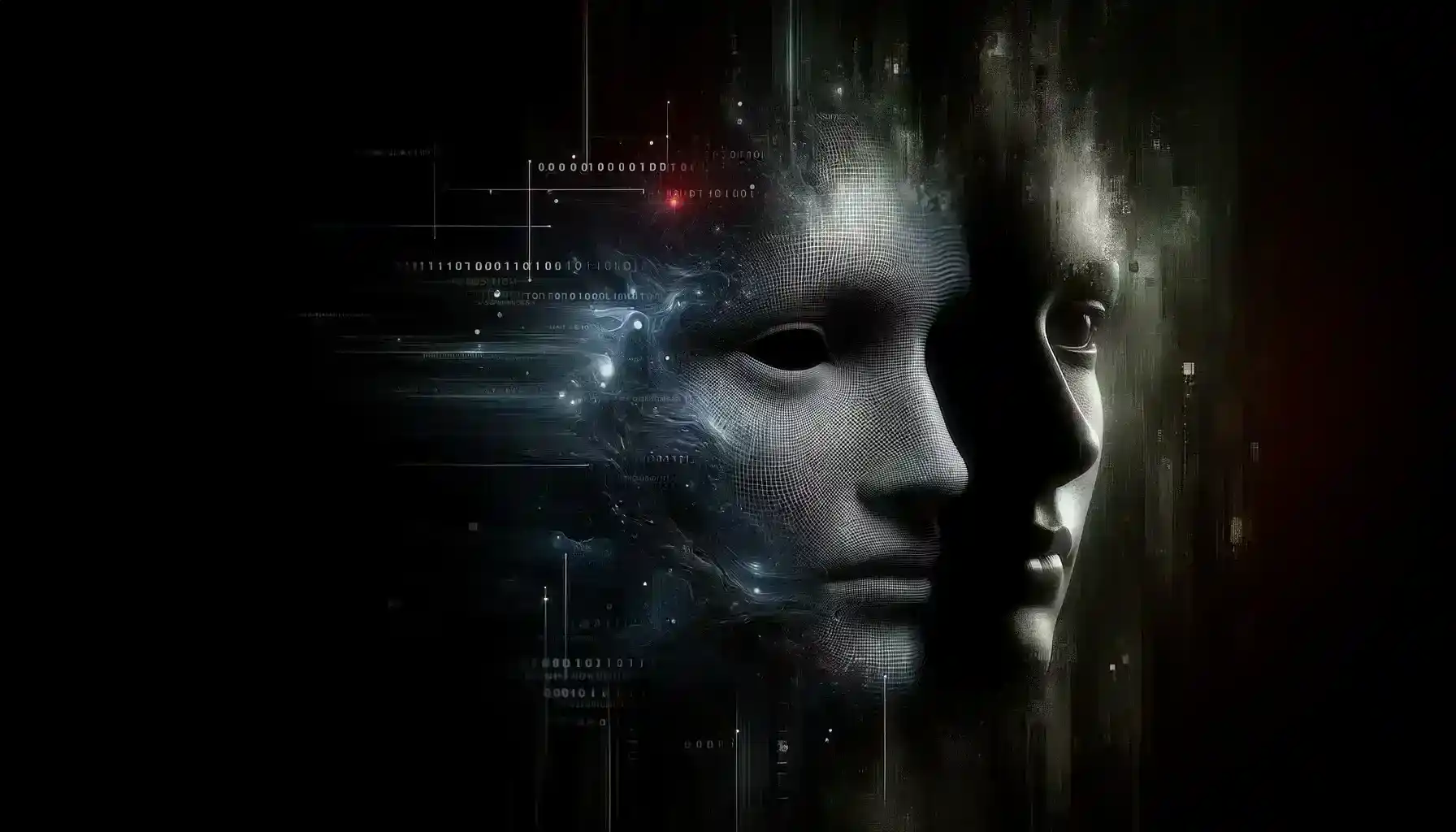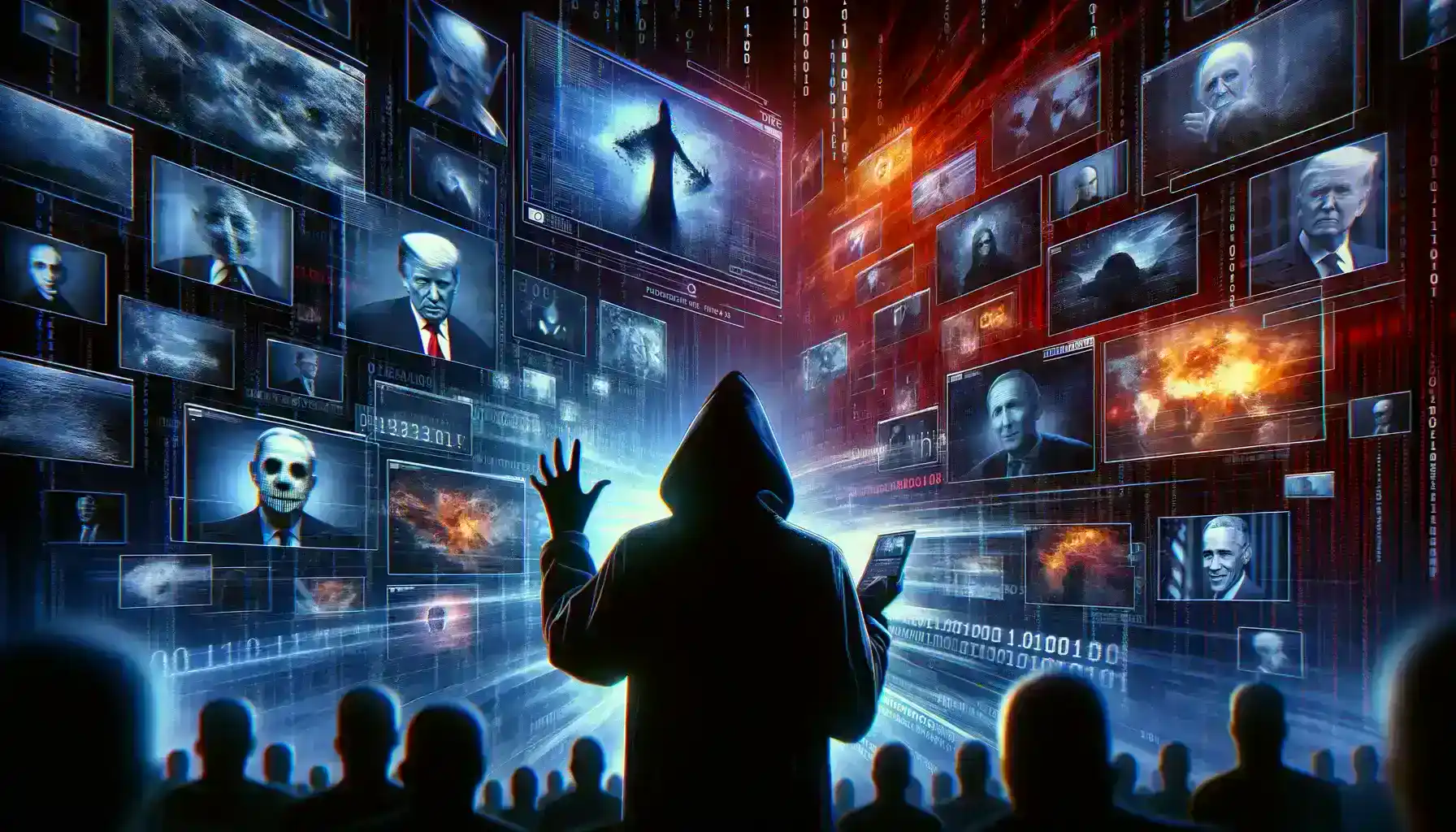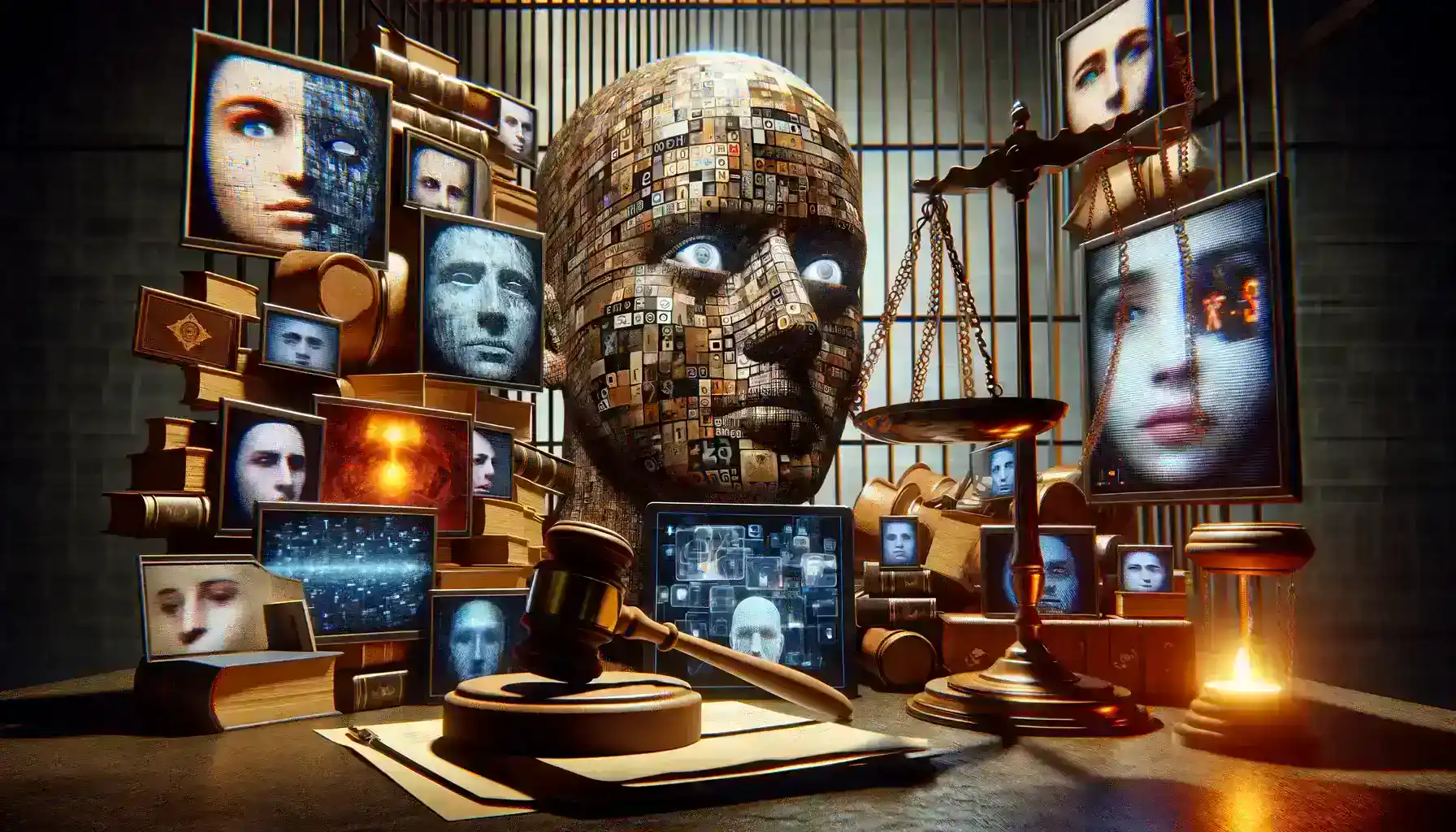Table of Contents
In an era where digital innovation is at its zenith, deepfake technology emerges as a double-edged sword, offering both groundbreaking possibilities and alarming ethical challenges. This article delves into the intricate world of deepfake technology. In this realm, reality and digital fabrication converge, creating a tapestry of illusions that are increasingly difficult to discern from the truth.

Deepfake technology involves using advanced artificial intelligence (AI) and machine learning algorithms to create or manipulate audio and video content, making it appear real.
The technology has evolved rapidly, with its roots in benign applications like filmmaking and entertainment, but it has now expanded into more controversial territories.
The Zenith of Digital Innovation in Deepfake Technology
Today, we are witnessing an unprecedented acceleration in digital innovation. Technologies that seemed like science fiction a decade ago are now realities transforming our everyday lives. In this landscape of rapid technological advancement, deepfake technology stands out as a particularly notable development. It embodies the pinnacle of what modern artificial intelligence and machine learning can achieve, demonstrating how these tools can manipulate audio and visual content with astonishing precision.
Deepfake Technology: A Double-Edged Sword
Deepfake technology, at its core, involves the synthesis of human images and voices using advanced AI algorithms. This technology is groundbreaking because it allows for the creation of highly realistic videos and audio recordings that can be nearly indistinguishable from genuine recordings. On the positive side, this has remarkable applications in areas such as entertainment, where filmmakers can create more realistic effects, or in communication, where language barriers can be bridged through accurate lip-syncing in different languages.
However, the same technology poses serious ethical challenges. The ease with which deepfakes can be created and disseminated across the internet makes them a powerful tool for spreading misinformation and propaganda. They can be used to create convincing fake news, impersonate public figures, or manipulate public opinion, all of which have profound implications for society and politics.
Convergence of Reality and Digital Fabrication
The realm of deepfakes is where the physical reality that we live in and the digital world created by AI intersect. This convergence is creating a tapestry of illusions—digital content that can be so closely intertwined with reality that the distinctions become blurred. We’re now faced with videos and audio that challenge our perception of truth and reality. This convergence raises critical questions about trust and authenticity in the digital age.
As deepfakes become more sophisticated, the ability to discern real content from fabricated ones becomes increasingly difficult. This not only affects individuals and their reputations but also has wider implications for media, politics, and society as a whole. The potential for misuse in spreading false information or malicious content is a significant concern, especially in sensitive areas like political discourse, where the authenticity of information is crucial.
Misinformation and Propaganda
Deepfakes have become a potent tool for spreading misinformation. By creating hyper-realistic fake news or impersonating public figures, they can easily sway public opinion or incite unrest. Illustrations include manipulated videos of politicians making fictitious statements, potentially influencing electoral processes or international relations.

The Rise of Digital Deception
In the digital age, the proliferation of deepfake technology has ushered in a new era of misinformation and propaganda. This technology utilizes advanced artificial intelligence to create hyper-realistic videos and audio recordings, making it possible to fabricate scenarios or statements that never actually occurred. The realism of these deepfakes is such that they can easily deceive the public, leading to widespread misinformation.
Impact on Public Opinion and Unrest
The ability to convincingly impersonate public figures has significant implications. Deepfakes can be used to create fake news stories where prominent individuals appear to say or do things that align with the creator’s agenda, rather than the truth. This capability is particularly concerning in the context of political manipulation. For example, a deepfake video could show a political leader making inflammatory remarks, inciting public unrest, or influencing the opinions of voters. Such content, when spread through social media and other digital channels, can rapidly go viral, reaching vast audiences and causing real-world consequences before the deception is even uncovered.
Influencing Electoral Processes and International Relations
The potential impact of deepfakes on electoral processes and international relations cannot be overstated. In the political arena, a fabricated video of a candidate could sway an election by misleading voters about the candidate’s policies, character, or capabilities. This type of misinformation poses a direct threat to the democratic process, undermining the integrity of elections.
Internationally, deepfakes can be used as tools of geopolitical strategy. A manipulated video could, for instance, depict a world leader making aggressive statements or threats, potentially escalating tensions between countries. Such deepfakes could be employed to manipulate public perception or diplomatic relations, leading to international conflicts based on falsehoods.
Identity Theft and Privacy Violations
The Threat to Individual Privacy
The advent of deepfake technology has escalated concerns regarding identity theft and privacy violations in profound ways. Unlike traditional forms of identity theft, deepfakes enable the creation of realistic videos or images by manipulating an individual’s likeness. This technology, while technologically impressive, poses a serious risk to personal privacy and security.
The Perils of Misused LikenessD
The misuse of deepfakes can lead to significant harm, especially when used to create compromising or false representations of individuals. Such content can have devastating effects on a person’s reputation, leading to public embarrassment, emotional distress, and even mental health issues. The potential for blackmail and personal attacks using deepfakes is a stark reality in this digital age. Victims might find themselves facing demands or threats based on content that is entirely fabricated, yet convincingly real in appearance.
Vulnerability of Celebrities and the Public
Deepfake technology does not discriminate between public figures and private individuals. Celebrities, often the first targets due to their high visibility, face the risk of having their images used in unauthorized contexts, such as in fake endorsements or more damaging scenarios like deepfake pornography. The impact, however, is not limited to celebrities. Every day individuals are equally vulnerable. With the widespread availability of personal photos and videos online, virtually anyone can become a target of deepfake misuse.
Legal and Regulatory Challenges

The legal framework is struggling to keep pace with the advancements in deepfake technology. Issues around consent, intellectual property rights, and defamation are in a complex interplay with freedom of expression and innovation. Addressing the challenges posed by deepfake technology requires a multi-faceted approach.
The Lagging Legal Framework
As deepfake technology rapidly advances, the legal framework is struggling to catch up, creating a significant gap in addressing the issues that arise from its misuse. The core legal challenges revolve around consent, intellectual property rights, and defamation, all of which are complicated by the nuances of freedom of expression and technological innovation. Deepfakes blur the lines between reality and fiction in a way that traditional legal systems are not equipped to handle.
Consent and Intellectual Property
One of the primary legal concerns is the lack of consent from individuals whose likenesses are used in deepfakes. This raises questions about the ownership of one’s image and voice. Intellectual property laws, traditionally designed to protect creative works, are now being challenged to adapt to a reality where a person’s identity can be replicated and used without their permission.
Defamation and Misinformation
Deepfakes also raise serious issues related to defamation. Fabricated videos or audio recordings can damage reputations and spread misinformation. For instance, the 2018 deepfake video of former U.S. President Barack Obama, although created as a public service announcement, demonstrated how easily public opinion can be manipulated. Similarly, the concerns around deepfakes in the 2020 U.S. election highlighted the potential for these technologies to undermine the integrity of democratic processes.
Freedom of Expression vs. Societal Stability
Balancing freedom of expression with societal stability is a delicate task. On one hand, there’s a need to protect creative and technological innovation, which often involves experimenting with new forms of expression. On the other hand, there’s a clear danger that unchecked use of deepfake technology can lead to social and political unrest.
The Need for New Legal Frameworks
To address these challenges, there’s a growing call for new legal frameworks and regulations specifically tailored to deepfake technology. This involves not only laws governing the creation and distribution of deepfakes but also policies around detection and disclosure.
Ethical Guidelines and Consensus
Alongside legal measures, there is a pressing need for ethical guidelines governing the use of deepfake technology. This includes establishing a consensus on what constitutes acceptable use and where the boundaries should be drawn to prevent harm.
International Cooperation
Given the global reach of deepfakes, international cooperation is essential. Different countries may have varying legal standards, but the cross-border nature of digital media calls for a unified approach to regulation and enforcement.
Related Article
Google’s Latest Update to Battling the Threat of AI Deepfakes
Conclusion
Deepfake technology, a marvel of the digital age, brings with it a host of ethical challenges that cannot be ignored. As we advance technologically, the need for a balanced approach becomes crucial. This involves stringent legal frameworks, ethical guidelines, and public awareness. The goal is not to stifle innovation but to harness its power responsibly, ensuring that the digital illusions we create do not eclipse the underlying truth of our shared reality. In unmasking these challenges, society must confront the illusions head-on, preserving the integrity of information and protecting individual rights in the digital age.
As we further explore the possibilities of deepfake technology, we must also be vigilant about its potential misuse. It’s essential to foster an environment where technological advancements are used responsibly and ethically, ensuring that the digital illusions created do not undermine the fabric of truth and trust that holds our society together. This journey requires the collaboration of technologists, legal experts, ethicists, and the general public to navigate these uncharted waters.